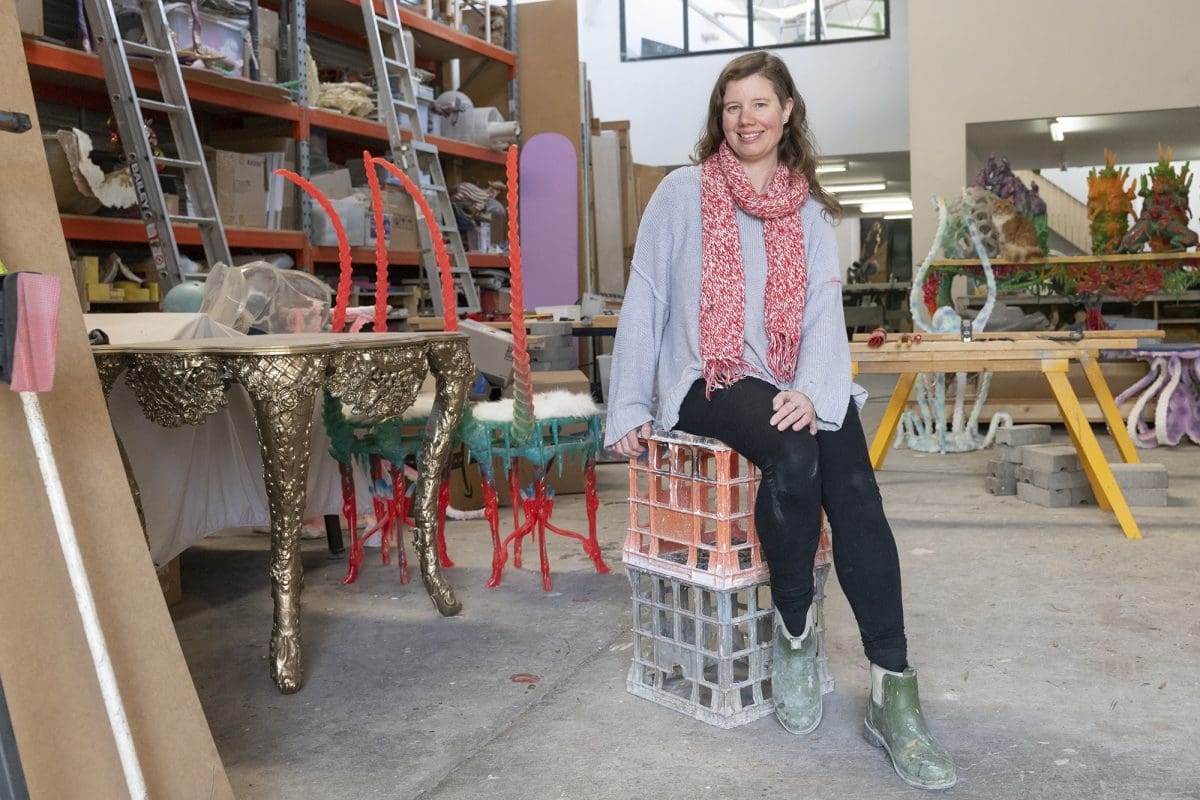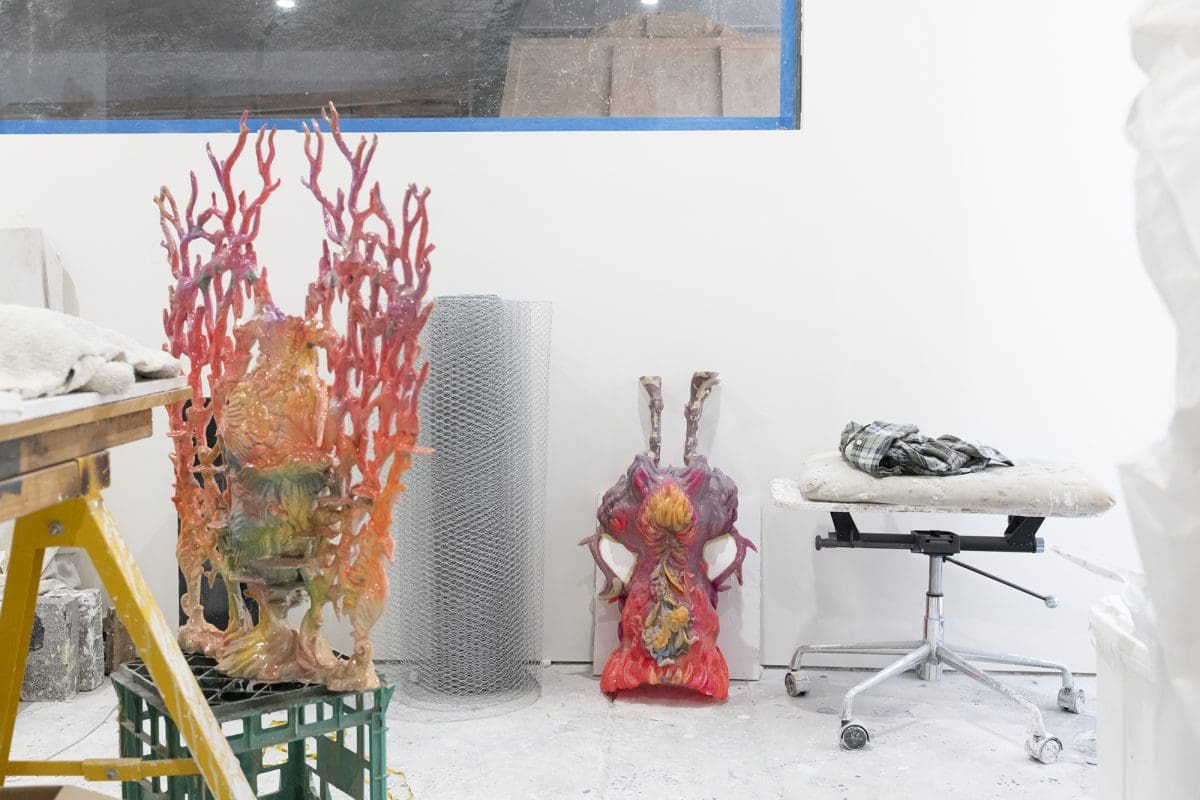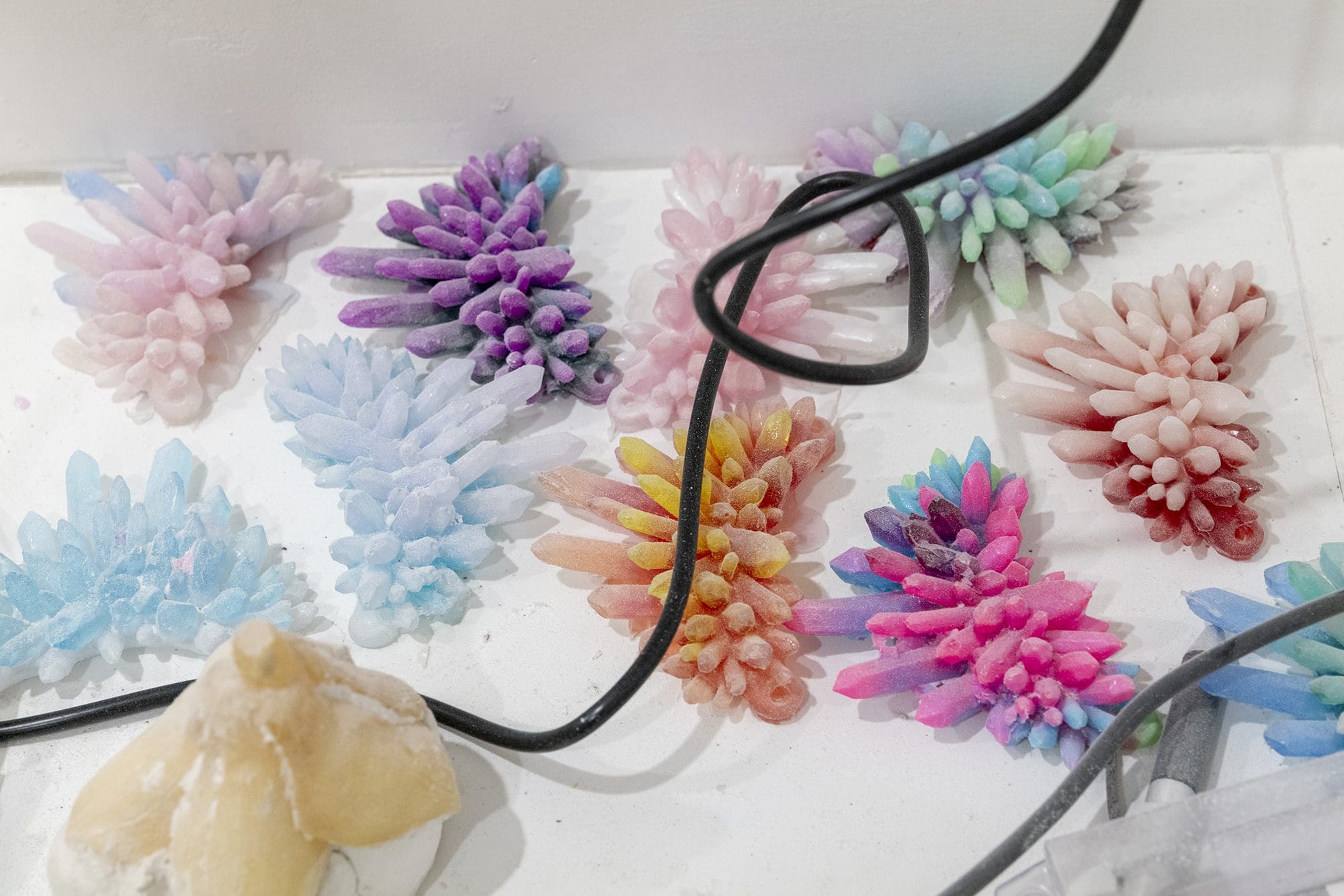
Place-driven Practice
Running for just two weeks across various locations in greater Walyalup, the Fremantle Biennale: Sanctuary, seeks to invite artists and audiences to engage with the built, natural and historic environment of the region.






Kate Rohde envisions flora and fauna in glossy technicolour. Her whimsical resin and plaster sculptures are simultaneously natural, unnatural, and even supernatural. In a space shared with her fluffy ginger cat Lion and her 6-year-old son, Rohde’s warehouse in Melbourne’s Northcote is a busy site of creativity and play. She talks about the luxuries—and pitfalls—of having a large studio space, how her versatile materials allow her to swiftly create works for tight deadlines, and the strange wonder of growing up in the Dandenong Ranges.

Place
Kate Rohde: I am very lucky to have a huge studio space. I’ve been here for 13 years. I feel like I can sprawl and have multiple little projects on the go. My son also uses the studio as his play area and has a special Lego table. Because of the scale we can have quite a lot of equipment here on site, it’s very industrial. We don’t have to worry about being too noisy or too messy, it’s pretty ideal.
This is basically my dream studio. The only thing is when it is this big, I do tend to accumulate more stuff than I probably want to over time. I sometimes need to check myself and do a Marie Kondo: “Does this spark joy? Should I get rid of this?”
I make bigger things because I’ve got all this room. It’s funny because I’m really good friends with Troy Emery [a Melbourne sculpture artist and collaborator] and he has a very modestly sized studio with regular domestic-sized doors. He can’t make anything that wouldn’t fit through them, otherwise he wouldn’t be able to get it out of the studio. I have never had to contemplate that.

Process
Kate Rohde: My works basically follow the same general construction. I make an armature out of a combination of steel, plywood and chicken wire and then pad it out. If I am going to cast the work in resin, I will first make a mould out of plasticine.
I then pigment the resin and pour it into the mould. If I am doing a plaster bandage, it is a matter of building up and wrapping the form. If it is something big, I will do a base layer and then add a detail layer. I will often finish smaller works with air-dried clay to give them colour, before sealing them. Everything feels like a real multi-step process! Sometimes it is quite fast and I make a work in a week, other times it takes months and feels like it will never end.
During lockdown I was getting tired of the whole casting process and was looking for ways to speed it up—that’s when I started using plaster bandage. Once the plaster has set it becomes very sturdy and has good structural integrity. But if I don’t like it, I can cut it out with a jigsaw, it’s quite easy to adjust and edit. It’s quite versatile. I like to use simple materials and see how I can manipulate them in various ways. The works I did for the Horsham Regional Art Gallery[Myth Making is showing until 20 November] are pretty much all plaster bandage works.
One of the reasons for using plaster is because it is more environmentally friendly. I also use some resins made from pine tree oil, rather than those that are petrochemical based. I am trying to move away from using resins, but I do still love the effect that they have.

Projects
Kate Rohde: Troy [Emery], who I have known for 10-12 years, asked me a year ago if I was keen to do a show together. Coincidentally the director of Horsham Regional Art Gallery rang me about doing an exhibition soon after, so I asked to bring Troy along as well. The timeline was quite short in the end, I think I only had about six weeks to make all new work! Sometimes it’s better just to say yes and then figure it out later. The show was loosely based on the local landscape, the colours, and different aspects of the environment there.
Nature is a common theme in my work. I grew up in the Dandenongs among all the trees and would see a lot of native animals, as well as feral species. There is a huge deer problem right now. To me it seems quite romantic to look out and see a herd of deer. But Mum says, “No no, they are terrible, they eat all my plants and destroy my garden.” As a child we had a wombat that lived out on the paddock, alongside possums and native birds, but also rabbits, foxes, and now deer.
I’ve always been interested in nature being used as the basis for decoration. In the Dandenongs I lived near Burnham Beeches, an incredible abandoned Art Deco mansion with motifs based on native Australian flora and fauna. I remember it being this glorious, glamourous place but have since seen it slowly being reclaimed by nature. The Dandenongs is this weird mix of wild nature and strong European influences.
I am super excited about exhibiting in Mount Gambia at Cathleen Edkins Gallery later this year because I recently discovered that there are all these sinkholes and grottos up there. I love a grotto. It is very much in my aesthetic. They are a mix of the natural and manmade. I feel like I am very much inspired by grottos at the moment.
Myth Making
Kate Rohde and Troy Emery
Horsham Regional Art Gallery (Horsham VIC)
Until 20 November
A Pretty Folly
Kate Rohde
Cathleen Edkins Gallery, The Riddoch (Mount Gambia SA)
26 November—22 January 2023
Monster Mash
Kate Rohde
Maitland Regional Gallery (Maitland NSW)
10 December—12 March 2023
This article was originally published in the November/December 2022 print edition of Art Guide Australia.